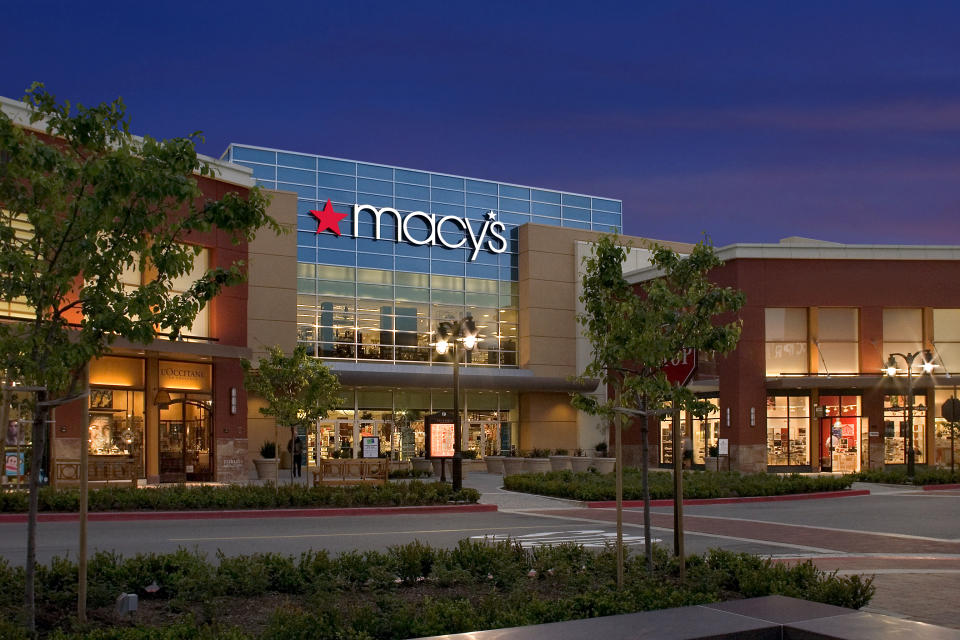Retailers Prepare for Spending Bounceback

Fashion blazed the path forward last month for retail — and some of the industry’s top executives were on Wall Street, virtually banging the drum and making the case that it’s them leading the way.
May apparel and accessories specialty stores sales rose 3 percent from April and were up more than 200 percent versus a year ago, according to the Census Bureau’s monthly reading of sales on Tuesday. Department store sales rose 1.6 percent from a month earlier and were up 28 percent from a year ago.
More from WWD
Fashion fared better than the overall trend. Total retail and food service fell 1.3 percent from a month ago, but were still up 28.1 percent from May 2000, when much of the country was still locked down in the early days of the COVID-19 pandemic.
Despite the decline in May, revisions made to the numbers in March and April and a general sense of consumer momentum gave economists heart.
“Households have trillions of dollars in savings burning a hole in their pockets and all sorts of pent‐up demand to buy goods and services, especially services that were unavailable during the pandemic,” said Stephen Stanley, chief economist at Amherst Pierpont Securities. “As a result, the sky is the limit for consumer spending for the rest of this year — and possibly 2022 as well.”
Matthew Shay, president and chief executive officer of the National Retail Federation, noted that year-over-year retail sales are ahead 17.6 percent for 2021 so far, showing a strong bounceback from lockdown.
“While there are downside risks related to labor shortages, supply chain bottlenecks, tax increases and overregulation, overall households are healthier, and consumers are demonstrating their ability and willingness to spend,” Shay said. “We are confident.”
And executives from Walmart Inc., Kohl’s Corp. and Macy’s Inc. who spoke at the Evercore ISI Consumer & Retail Summit Tuesday, touted just how they’ve been repositioning and feel good about taking on the new consumer landscape.

Walmart is putting this capital into digital.
WALMART INC.
Walmart, already a few years into investing in its logistics, cloud and tech infrastructure, said in February that it planned to spend some $14 billion on capital expenditures this year, roughly 3 percent of sales.
The declaration sparked discussion around how the retailer with more than 4,700 locations in the U.S. would allocate that spending. Walmart’s chief financial officer Brett Biggs acknowledged at the ISI conference that, that in years past, the company had directed a significant chunk of spending to growing its physical presence. But this year, he said the spending would go toward the company’s e-commerce oriented vision for its evolving role as the largest retailer in the U.S.
In 2021, the company expects to spend just around 10 percent of its capital expenditures on building new stores, compared to roughly 60 percent in 2015, Biggs said.
“We’re spending a lot of money on things that will make it easier for customers to be in our ecosystem and make it more effective, make us more effective with our customers from an experience standpoint and more efficient from,” he said at the summit.
The biggest change to Walmart’s capex for the next few years is going to be focused on the “supply chain — whether that’s fulfillment capacity, which is something we’ve been talking about wanting to do anyway with the volume that we’ve been driving in the pandemic — and our e-commerce business, [which] is roughly double the size it was a year ago,” Biggs said.
The strategy appears to address some of the shopping phenomena the company observed in the earlier phases of the ongoing pandemic, including depleted shelves as shoppers panic-bought household necessities before last year’s temporary lockdowns, and supply chain disruptions.
Biggs also addressed the company’s loss of grocery market share last year, attributing it to the retailer’s reduced store hours at the time. Since extending store hours, the company’s grocery shares are increasing again, he said.
Biggs also alluded to the conceptual shift Walmart is aiming for with all its recent investments in online delivery and logistics and customer services: he described a vision where the customer wouldn’t “think about shopping, just replenishment, and we’re there to take care of that for them.”

Kohl’s off mall locations help set it apart.
KOHL’S CORP.
Kohl’s has always been something of a special case in retail, not a discounter like Walmart or Target Corp., but with its off-mall locations, not a typical department store, either.
Now led by CEO Michelle Gass, the company is changing more, linking with Amazon, bringing in Sephora and focusing on active and casual, having trimmed back less productive lines in its women’s assortment.
“Is it fair to think about Kohl’s as a department store?” asked ISI analyst Omar Saad, who also pushed Gass to describe her vision of the company five or 10 years down the line.
“During the pandemic, we really took a step back and really thought about, ‘What should the vision and mission of the company be? What should we stand for?’” Gass said.
“We believe that we can pivot the brand from — if some people still think about us as this quasi-department store, really to being much more of a specialty retailer that is known for the active and casual,” the CEO said.
“When we think about active, we think about a full spectrum,” she said. “We think about traditional active, i.e., go out to work, workout. And we think about casual, like denim and everything in between. And I think what’s really exciting for Kohl’s is we were ahead of this trend. We were moving in this direction [before the pandemic].”

Macy’s best stores are feeding its digital business as well.
MACY’S INC.
Adrian Mitchell, chief financial officer of Macy’s, said consumers are feeling confident.
“Over the last year, a lot of consumers have really saved up a lot of dollars and now they have the opportunity to spend them,” Mitchell said.
And that spending journey is often starting online.
“We’re fortunate that we have one of the largest digital platforms in retail,” Mitchell said.
It’s a business that Macy’s had been working to build for some time and one the retailer was able to turn to during the pandemic.
“When you think about our digital business, we expect it to be an $8 billion business this year and we’re focusing on getting this business to $10 billion by the end of 2023,” he said.
“We’re getting better every day, the customer experience is getting better every day,” he said. “Our stores in the best malls remain integral as well. Our digital sales really benefit from the role stores play.”
But at Macy’s and across the industry, digital is much more than distribution.
Mitchell underscored the importance of data and analytics in making better business decisions.
“Our mindset is that data and analytics will increasingly permeate everything we do at Macy’s operationally,” the CFO said. “And we have assembled a really strong data and analytics team whose focus is on building profitable customer relationships through better decision making.”
That spans from providing a more personalized experience to shoppers to improving margins through more sophisticated and AI-backed pricing and better inventory allocation.
More from WWD:
Authentic Brands Files for IPO Confidentially: Sources
Stefan Larsson’s PVH Taking Shape
Ssense Sells Minority Stake to Sequoia Capital
Sign up for WWD's Newsletter. For the latest news, follow us on Twitter, Facebook, and Instagram.

 Yahoo Movies
Yahoo Movies 